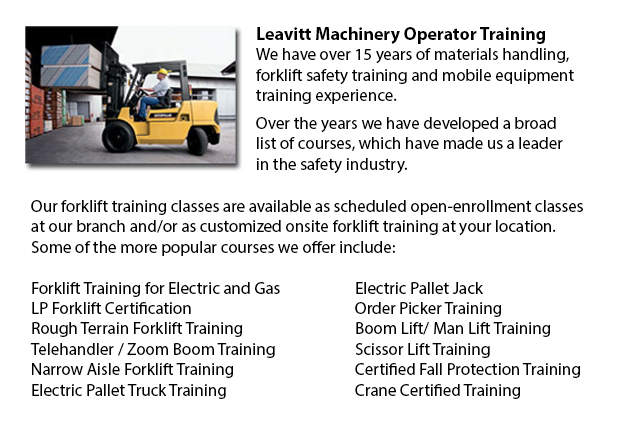
There are in fact two unique categories of forklifts within the materials handling industry, the industrial model and the rough terrain model. Rough terrain lift trucks initially came on the marketplace in the 1940's and were primarily utilized on coarse roads, ideal for places where no covered surfaces were available, like construction sites and lumberyards.
Typically, nearly all rough terrain forklifts are run on a propane, diesel or gas driven internal combustion engines with a battery used for power. Many manufacturers are playing with rough land lift trucks that consume vegetable matter and run from ethanol. Large pneumatic tires with deep treads distinguish these forklifts to permit them to clutch onto the roughest soil type without any slippage or shifting.
Some of the original designs of rough terrain forklifts had the ability to raise in excess of 1000 lbs, by means of blades that could slide under the item, haul it slightly and shift it to an alternate location. After more than ten years on the market, all terrain lift trucks were augmented with added carrying muscle, increasing the potential load to more than 2000 lbs. In the 1960's telescoping booms were added, enabling them to stack resources a good deal higher than in previous years. The telescoping design feature is a staple of most all terrain lift trucks at the moment. Present versions are capable of handling well over 4000 lbs thanks to the constant improvements through the years. Telescoping ability has also improved with some models attaining a height of 35 feet. Operator safety has also become a focus with some all terrain lift trucks currently built are equipped with an enclosed cab for the driver, versus the older open air seating capacity.
The rough terrain lift trucks on the market nowadays both perform well on unpaved surfaces and paved floors. This type of all terrain forklift is marketed for itsâ?? adaptability allowing the possibility for companies to utilize one unit to transport resources from an outside working area into a warehouse.
-
Pneumatic Forklifts
Pneumatic lifts are referred to as pallet lift trucks or pump trucks and are widely utilized in warehouses and transport plants to transport materials on pallets. Pneumatic forklifts comprises a pair of metal blades installed on a wheeled counterweig... More -
Pallet Lifts
A pallet lift is a model of equipment focused in the transporting of pallets of many dimensions and weights. They might be utilized as an attachment for forklifts, cranes and other kinds of heavy machinery or be utilized on their own. Pallet lifts ar... More -
Doosan Forklift
Doosan Infracore Company Ltd. is an international and intercontinental organization that features Defense Industry Products, Industrial Vehicles, Diesel Engines, Automation Systems, Machine Tools and Construction Equipment. In the United States... More -
Aerial Lifts
Aerial forklifts can accommodate numerous odd jobs involving high and tricky reaching places. Often utilized to execute regular upkeep in structures with lofty ceilings, prune tree branches, elevate heavy shelving units or fix phone cables. A ladder... More -
Reach Trucks
Reach trucks are loading devices used by varieties of businesses that sustain a storage facility or supply center relating to the arrangement of completed merchandise and supplies on pallets which are inserted into elevated shelving units. This machi... More

Forklift Training Vancouver
TOLL FREE: 1-888-254-6157
24389 Fraser Highway
Langley, British Columbia
forklifttrainingvancouver.com
Email Us
About Us


